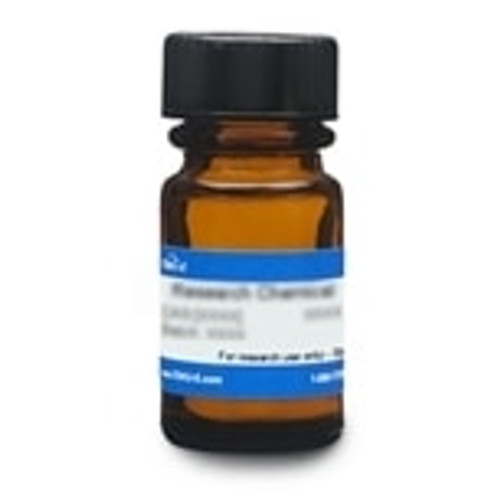Quinine is a naturally occurring alkaloid first isolated from the bark of the cinchona tree in 1820. It is a stereoisomer of quinidine which contains an aromatic quinoline and a bicyclic quinuclidine. It functions as a potassium channel blocker and is used as an anti-malarial compound. Quinine can be used as an analytical reference standard during the chemical evaluation of alkaloids. Bark extracts have been used to treat malaria since 1632 (Sullivan, 2011) and Quinine was the first antimalarial compound used (Achan et al, 2011). Quinine is also used in food science and nutrition research as a bitterness standard.
We also offer:
| Mechanism of Action | The mechanism of action of Quinine has not been fully resolved. Cell fractionation studies in parasitology have shown that it inhibits hemozoin formation in the parasite cell which allows buildup of cytotoxic heme resulting in death. Quinine also acts as a potassium channel blocker. |
| Spectrum | Quinine is active against parasites. |
| Microbiology Applications |
A study of 60 isolates of the human malaria parasite Plasmodium falciparum in Thailand showed susceptibility to Quinine, with variable MIC values (10-6 - 10-8 M)(Thaithong et al, 1983). |
| Molecular Formula |
C20H24N2O2 |
| Solubility | Freely soluble in ethanol and chloroform. Soluble in water. |
| References |
Achan J et al (2011) Quinine, an old anti-malarial drug in a modern world: Role in the treatment of malaria. Malar. J 10:144 PMID 21609473 Combrinck JM et al (2013) Insights into the role of heme in the mechanism of action of antimalarials. ACS Chem Biol 8(1):133-137 PMID 23043646 Chang WI, Chung JW, Kim YK, Chung SC and Kho HS (2006) The relationship between phenylthicarbamide (PTC) and 6-n-propylthiouracil (PROP) taster status and taste thresholds for sucrose and Quinine. Arch. Oral Biol. 51(5):427-432 PMID 16297856 Hansen JL, Reed DR, Wright MJ, Martin NG and Breslin PA (2006) Heritability and genetic covariation of sensitivity to PROP, SOA, quinine HCl, and caffeine. Chem Senses Volume 31(5):403-413 PMID 16527870 Lakowicz JR (2006) Instrumentation for fluorescence spectroscopy. In: Principles of fluorescence spectroscopy. 3rd ed. Springer-Verlag pp. 54 Sullivan, DJ (2011) Cinchona Alkaloids: Quinine and Quinidine. In: Treatment and prevention of malaria: Antimalarial drug chemistry, action and use. Staines HM and Krishna S. Springer Basel editors. pp. 45-65 Thaithong S, Beale GH, Chutmongkonkul M (1983 ) Susceptibility of Plasmodium falciparum to five drugs: An in vitro study of isolates mainly from Thailand. Trans. R. Soc. Trop. Med. Hyg. 77(2):228-231 PMID 6346591 |
| MIC |




